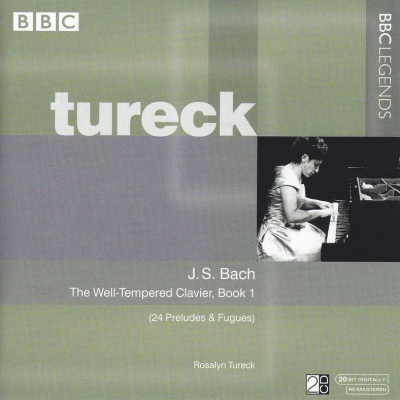
J.S. Bach: The Well-Tempered Clavier, Book 1
Although Rosalyn Tureck (1914-2003) began her career as a powerhouse Romantic pianist, even making her collaborative debut with the Brahms B-flat Concerto, she established herself as “the high priestess of Bach,” rivaling Wanda Landowska as the exponent of the academic-intellectual tradition. Like Gina Bachauer, Tureck sported a high gloss and aggressive patina in her playing; and while both could be capable of fine degrees of color and shading, there is nothing “effeminate” about the sound projection. The Bach WTC I seems to have been recorded in groups of six–homage to the old Baroque sets of concerti grossi, perhaps–Preludes and Fugues 1-6: 30 September 1975; Preludes and Fugues 7-12: 7 October 1975; Preludes and Fugues 13-18: 20 October 1975; and Preludes and Fugues 19-24: 20 April 1976. All of the inscriptions derive from sessions at BBC Concert Hall Studios in London. Tureck often characterized Bach as a synthesis of wisdom and adventure. Tureck brings drive and tension to many of the 24 Preludes and Fugues: her cool yet colossal approach had been a great influence of Canadian Glenn Gould’s own pointillist approach. After the sweet lyricism of the C Major, the C Minor leaps out like a tiger. The G Major has verve and wit; the G Minor a mysterious melancholy. The A-flat Major and G-sharp Minor Fugues take us to some foreign land. For sheer sparkling virtuosity, try the D Minor or the Prelude in B-flat Major. Piquant humor informs the A Major Prelude; the staccato punctuations of the A Minor Fugue might punch a hole in your hi-fi equipment. For the enigmas of Bach’s harmonic labyrinth, the Prelude and Fugue in F Minor provides intricate threads of thought. The last of the set, in B Minor, remains the most epically elegiac in scope, an unswerving gaze beyond the veil. For two hours at the altar or pillar of Western Music, you could not do better than to have Tureck as your tour guide. She makes a virtue of musical fixation. -- Gary Lemco
